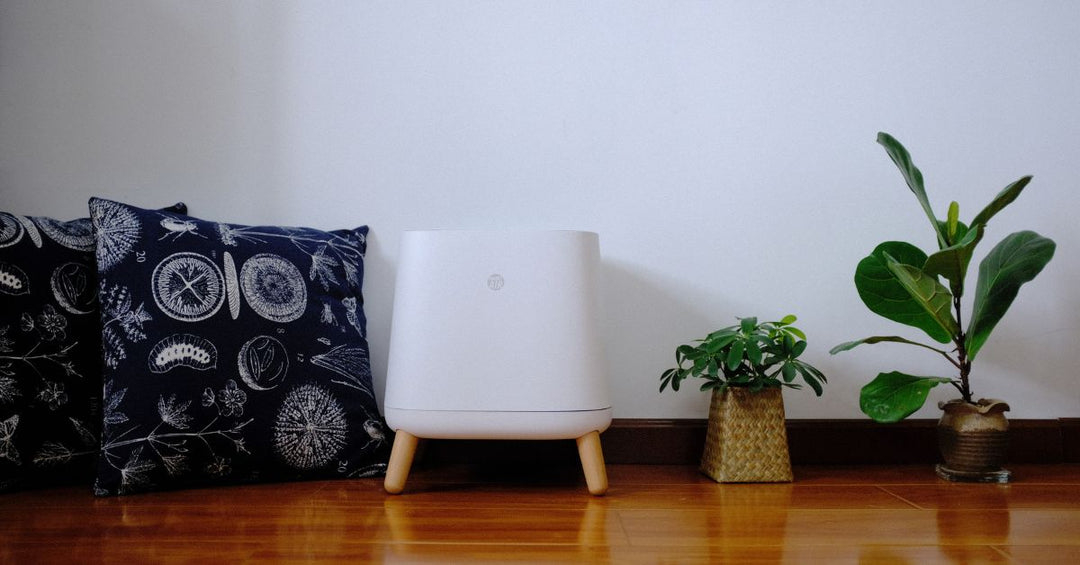An Introduction To Reading Indoor Air Quality Testing

The air inside your home effects more than just your comfort. It can influence how you sleep and your overall well-being, which is why clean air is a necessity. How can you tell how clean your air is? Indoor air quality testing provides the answer.
Indoor air quality testing helps you measure and identify what's in the air you breathe. Learn what the test results mean and the steps you can take to improve the air in your home with this introduction to reading indoor air quality testing.
Why Testing Indoor Air Quality Is Important
Air quality is a significant component influencing an environment's comfort and health levels. When you have poor air quality at home, you may experience stuffiness, bad odors, or headaches and fatigue.
Beyond making you uncomfortable, inadequate indoor air quality can trigger allergies, asthma symptoms, and respiratory issues. Dust, mold spores, carbon monoxide, radon, and volatile organic compounds (VOC) aren’t always visible or immediately detectable, but regular indoor air quality testing can help you pinpoint such pollutants.
Early detection allows you to address problems before they worsen. When you identify air quality issues quickly, you can improve ventilation systems, creating a better living space while reducing utility costs.
The Basics of Indoor Air Quality Testing
Indoor air quality testing measures pollutant levels and other factors in your air. These tests check for a range of contaminants, including particulate matter, carbon monoxide, and volatile organic compounds (VOCs). They may also assess humidity and temperature, as these elements work together to influence how comfortable and healthy your air feels.
Indoor Air Quality Testing Methods and Tools
An introduction to reading indoor air quality testing isn’t complete without delving into the various tools and methods for testing indoor air quality. Each technique serves its purpose and focuses on specific contaminants or aspects of your air.
Indoor Air Quality (IAQ) Monitors

IAQ monitors, like the QP Pro and QP Lite, are versatile devices that track multiple contaminants such as PM2.5, CO2, VOCs, and PM10.. They often come with digital displays and smartphone apps, making tracking changes in real time easy.
Carbon Monoxide Detectors
Carbon monoxide is one of the most dangerous indoor pollutants because of its odorless and colorless properties. Exposure can cause headaches, dizziness, and even death. Carbon monoxide detectors are a must for every home, as they sound an alarm upon detecting the presence of this gas.
Mold Testing Kits
Mold spores can aggravate allergies and other health conditions. Mold testing kits typically involve collecting air or surface samples, which then undergo analysis for the presence of mold colonies. While at-home kits provide a general overview, professional testing may be necessary for extensive contamination.
Radon Testing Kits
Radon, a radioactive gas naturally present in soil, can get inside your home through any cracks in its foundation. Long-term exposure increases the chances of lung cancer development. Radon testing kits are available in short-term options for quick results and long-term versions that provide comprehensive data collected over several months.
How To Read Indoor Air Quality Test Results
Interpreting air quality test results may seem intimidating at first. Nevertheless, most modern devices and kits present data in simple formats. Here’s how to understand your results.
Understand the Measurement Units
Indoor air quality monitors display pollutant levels in different units. Common units include:
- Parts per million (ppm) for gases
- Micrograms per cubic meter (µg/m³) for particulate matter
- Percentage for humidity
Knowing what these units mean helps you assess whether your indoor air readings are above or below safe limits. For example, particulate matter levels between 33 and 55 µg/m³ can be dangerous for those with respiratory conditions. Anything greater than 55 µg/m³ can cause undesirable health effects for anyone.
Similarly, carbon monoxide levels between 10 and 35 ppm can cause headaches and discomfort. Prolonged exposure to carbon monoxide levels between 36 and 100 ppm can be life-threatening, with any amount over 100 ppm indicating an immediately dangerous situation requiring evacuation.
Look for Trends
If your device tracks data over time, pay attention to patterns. For example, VOC levels may spike while cooking or using household cleaners, highlighting the need for better ventilation during these activities.
Act On High Readings
Elevated levels of carbon monoxide, radon, or mold spores require immediate attention. Follow the recommendations provided in your test kit instructions or consult a professional for further guidance. By taking the time to understand these readings, you can quickly recognize issues and address them effectively.
When You Should Test Indoor Air Quality
There are certain times when testing indoor air quality is particularly important. Scheduling tests during these key moments helps you stay proactive and address concerns promptly. Have IAQ tests conducted under the following circumstances:
- Seasonal changes: Heating and cooling systems influence air quality, so consider testing before winter and summer months when these systems get the most use.
- After home renovations: New construction materials, paints, and adhesives can release VOCs into the air, making testing crucial after a renovation.
- If you notice symptoms: Frequent headaches, allergy-like symptoms, or unexplained breathing difficulties may indicate poor air quality.
- When moving into a new home: It’s worth testing the air to identify any pre-existing issues, especially in older buildings where radon or mold could be a concern.
- To monitor risk factors: Homes with gas appliances, smokers, or pets may benefit from routine testing to keep air conditions safe and healthy.
How To Improve Indoor Air Quality
Once you identify issues in your air, improving indoor air quality doesn’t have to be daunting. Here are some practical steps:
Increase Ventilation and Purify the Air

Keep your windows and doors open to encourage fresh air circulation. If outdoor conditions aren’t ideal, consider using air purifiers to reduce pollutants.
Install a high-quality air purifier equipped with robust HEPA filters in your household. These purifiers efficiently reduce particulate matter, allergens, and other airborne irritants.
To improve the air you and your family breathe in more effectively, rely on a HEPA room purifier from a leading distributor of air quality management systems, such as Smarter HEPA. The HEPA filters in our purifiers capture nearly all airborne pollutants in a single pass. Our products help you take purification a step further, as we supply activated carbon filters you can use in your air purifier to eradicate VOCs.
Maintain Your HVAC System
Dirty ducts can redistribute contaminants. Schedule regular duct cleaning and maintenance to keep your heating and cooling systems running efficiently.
Switch to Low-VOC Products
Be intentional in using paints, cleaners, and other household materials labeled as “low VOC.” Doing so reduces emissions indoors.
Take Control of What You Breathe
Routine testing gives you an updated and invaluable window into the health of your environment by ensuring IAQ doesn’t deteriorate over time. When you can identify pollutant levels, you have the knowledge needed to create safer, more comfortable spaces for yourself and your family.
Ready to take action on your test results? Start with one reading at a time and make practical changes, like equipping your home with a trusted Smarter HEPA purifier, to achieve and maintain cleaner air for better health.




